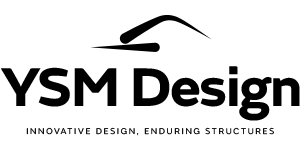Can We Help?
Frequently Asked Questions
How fast you can print a certain structure depends on many factors, such as print/building size, material properties, operation workers’ experience and other project management factors.
It is also important to know about the wall design (single wall or double wall with cavity between the walls).
The printer has a maximum speed of 100 cm/sec. The ability use more or less of the full speed depends on the size of the pump, the materials to be used and other factors. We are regularly printing with a speed of 40 or 50 cm/sec.
Smaller buildings like a 50m2 3D printed house can be printed with our BOD2 3D construction printer in one day.
With our BOD2 printer, it is possible to 3D print houses and buildings up to 10 meters (32 feet) in the height, which allows for printing of 3 story buildings.
Several 2 story buildings and houses have been 3D printed with our technology – as references, check out PERI and KampC.
A 3D construction printer is a 3D printing system specifically developed and specialized for construction.
- As with regular 3D printing, a digital model of the building is created using CAD software.
- The digital model is converted into G-code and uploaded to the 3D printer.
- A material delivery system is connected to the printer.
- The printer then reads the G-code and lays down successive layers of the supplied material.
We suggest a team of 3-4 people. Initially, it would be good if there were more on the ground.
- Printer operator, it is recommended that the operator has a good technical background and knows some 3d modelling. This person will be the main contact to the architects and it is his or her responsibility to make sure the printed structure is according to the drawings provided. Good knowledge about electronics and 3d printing in general as well.
( Recommended operator could have a background as an Architect – Civil engineer – 3d printing expert – Mechanical engineer) - Materials operator, we recommend someone with an engineering background and also physically fit. The role of this person will be preparing the batches and doing the initial material examination and testing (slump test, vain test). In addition, the person would also be responsible for adjusting the mix according to the printing conditions and coordinating with the printer operator (Recommended Materials operator could have a background in Civil engineering, 3d printing expert, Mechanical engineer or Concrete and construction)
- Materials operator helper. This role is physically active to help with measurements and support the materials operator as well as help on cleaning and refilling the silos. (construction site experience)
- Hands-on helpers. On-site to help setting up the printer, hose, move around and ongoing printing visual inspection. It is also favourable if they can drive a boom loader to feed the batch plant with materials while printing (filling up the sand and aggregates … etc.), flush the system and clean the equipment. (construction site experience)
The same team can also be trained to install and uninstall the printer on-site with the help of a crane.
The BOD2 is an open source 3D construction printer. It can print with concrete, mortar, or any other printable material. This ensures the most cost-efficient materials, as raw materials can be locally sourced.
Abaad do not believe in proprietary mixes as they are limiting and very expensive. A lot of our peers within the industry forces their customers to use proprietary mixes. This blows the flexibility and cost of any project out the water, making it virtually impossible to gain anything from it.

